LG V30 Review
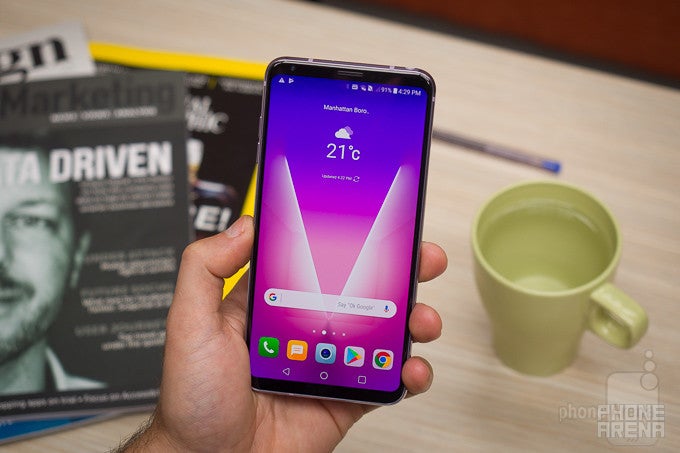
Update: Read our LG V40 ThinQ review!
This year, you don't have to look far to find a smartphone maker experimenting with something new, shaking up the old ways of doing things. The look of phones is changing, and everywhere from the Samsung Galaxy S8 to Apple's iPhone X, we're seeing the effect that the arrival of super-widescreen displays has on established brands. LG helped lead the charge earlier this year with the G6, and in doing so showed us just how ready it was to abandon the old and usher in the new, scrapping the G5's modular hardware in favor of a clean, streamlined look.
But just as Samsung brought a new design to both its Galaxy S and Note lineups, LG's got its own feature-enriched phablet to complement its more mainstream flagship, and this tide of change was inevitably coming to wash over the LG V-series, as well.
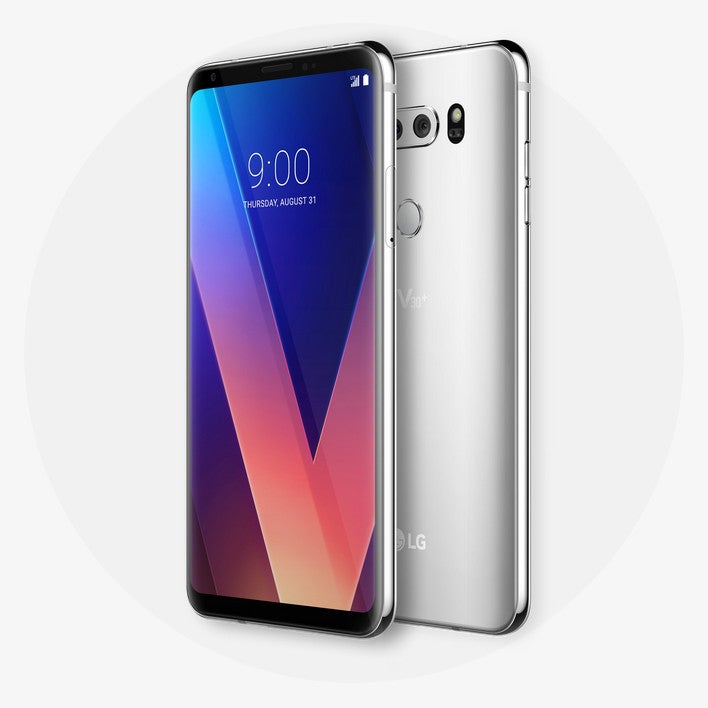
When we first got to meet the V30 back around the time of IFA 2017 at the end of August, we went hands-on with an early preview edition of the hardware: maybe 95% of the way towards the final product, but with LG still making some last-minute adjustments before the phone was ready to go up for sale. Well, retail availability has finally landed, and that means it's time for us to turn our attention back to the V30 and really put this hardware under the microscope; what can it do, how does it stack up to the rest of the smartphone pack, and just how strongly will it appeal to ardent V20 fans?
We've been putting together some answers to those burning questions – read on to find what we learned.
In the box:
- LG V30
- Quickcharge 3.0 charger
- USB Type C to standard-A cable
- Warranty card
- Welcome guide
- SIM tool
- Cleaning cloth
Design
If you thought the G6 was too boxy, the smooth, rounded V30 could be just what you're looking for
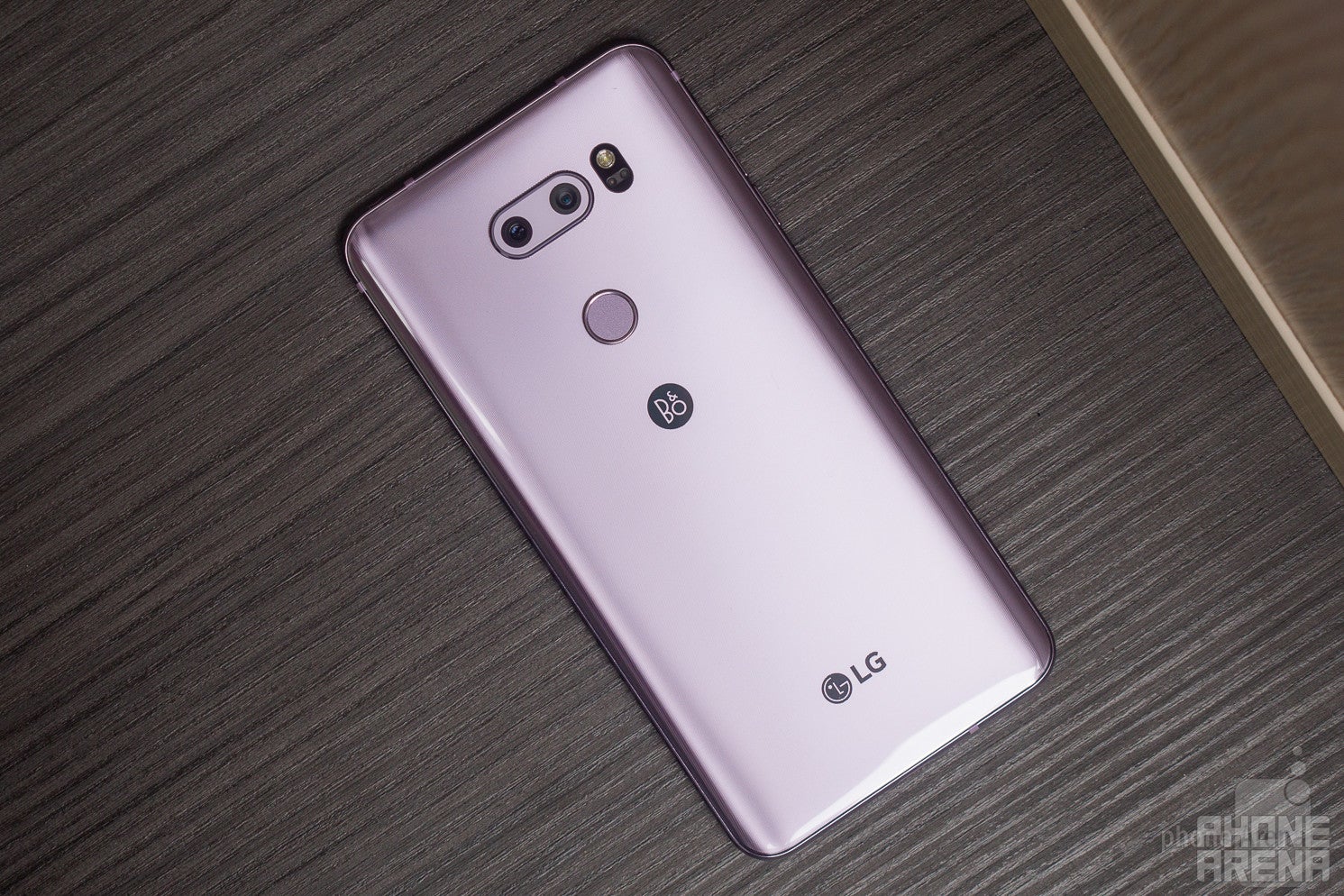
Just as this year's G6 is a radical departure from 2016's G5, the V30 shares very little in common with the look of last year's V20. The V30 is smaller, lighter, and built from different materials. But while LG's definitely not afraid to take the V series in a new direction, there are still traces here of what we liked about how previous V phones were put together.
But metal back? Out. Removable rear panel? Forget about it. In fact, from a pure design standpoint, it makes a lot more sense to compare the V30 to the G6 than the V20. Like the G6, we've got another face-filling 18:9 aspect ratio screen. We'll talk about that panel's performance in just a moment, but insofar as design goes, compared to the G6, LG has seriously upped the ante with the V30. Bezels are reduced here, letting the V30's screen expand to fill even more of the phone's front panel – here, just under 82% – and while we don't get a curved over-the-edge display like on a Samsung phone, the use of curved glass does give the V30 a sleeker, more streamlined look than the G6.
Don't get us wrong: we've got a major soft spot for the rigid, squared-off look of the G6. But it's impossible to deny that the design of the V30 feels like a more mature version of that initial effort.
Like both the G6 and V20, the V30 gets a pair of rear cameras, mounted atop the combination fingerprint scanner/power button. Like the former and unlike the latter, those are all surrounded by a sea of glass. Underneath you'll find an array of finely textured lines, helping to catch and reflect light; the effect isn't quite as pretty as we see from Honor flagships, but it's a noble effort, all the same.
Up top we've got the V30's headphone jack, which the phone admirably holds onto – and while other phones have dropped that entirely, LG continues to double-down with not just the presence of that port, but also a dedicated quad-DAC for pumping out the highest-quality tunes possible.
On the right, there's just the combination SIM/micro SD tray, and on the left – the phone's volume buttons. Down below lives the USB Type-C port and the V30's speaker.
Thanks to the new screen shape, the V30 is able to cram a six-inch screen into a package that's more petite than the V20 in every dimension, but maybe most significantly when it comes to the phone's height, which at 151.7mm is five percent shorter than the V20. That makes reaching every corner of the phone that much easier with one-handed operation. Really, the new V30 isn't that much larger than the G6: just about 3mm taller, 3mm wider, and 0.5mm thinner; that's right, the bigger-screened V30 is actually thinner than the G6.
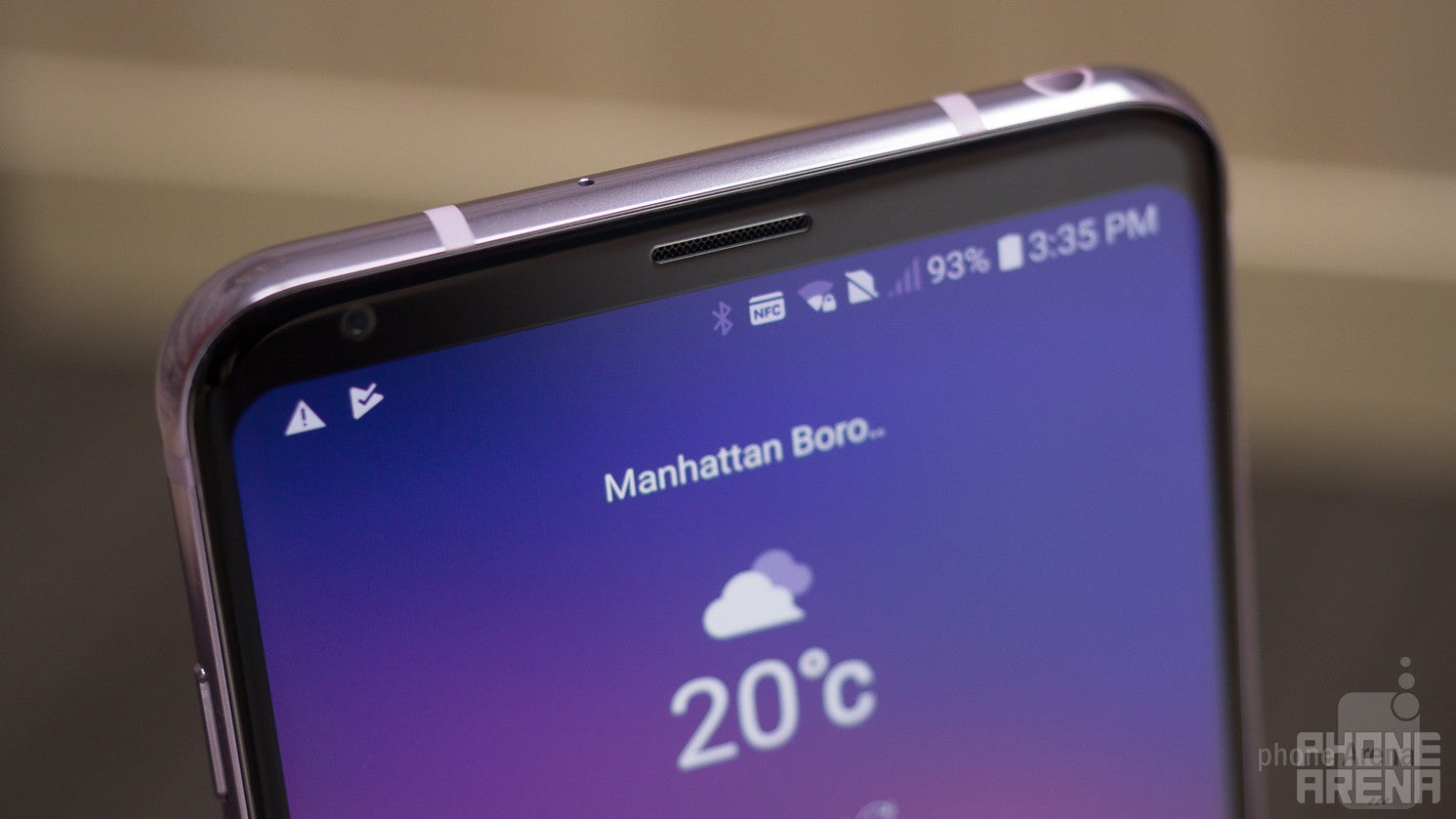
While some users will miss the V20's removable back (and correspondingly replaceable battery), sealing the V30 up as tight as it is does deliver one very nice benefit, as the phone carries an IP68 rating for water resistance.
All this comes together to give us a fantastically dense, well designed phone. Past V-models were good too, but maybe leaned a little too far into feeling “big.” The V30, meanwhile, manages to stick to the core functionality users need while taking a form that feels refreshingly compact. You won't mistake this handset for an iPhone, sure, but you won't feel like you have a tablet in your pocket, either.
Display
A promising display that's nonetheless haunted by issues with uniformity
LG introduced us to the 18:9 extra-wide smartphone display on the G6, but the panel on the V30 isn't just a simple rehash of that screen. While we're looking at another screen with a pixel-dense 2880 x 1440 resolution, instead of an LCD like on the G6, the V30 goes with a low-latency OLED display. Beyond spelling support for Google Daydream, that means the promise of super-saturated, extra-bold colors.
Indeed, that's just what we get on the V30, but like with so many other OLED screens, we're trading color accuracy for that bigger-than-life look. Nothing's so bad as to have us disliking how content appears on the V30's display, but don't treat it as the gold standard by which other screens should be compared, either.
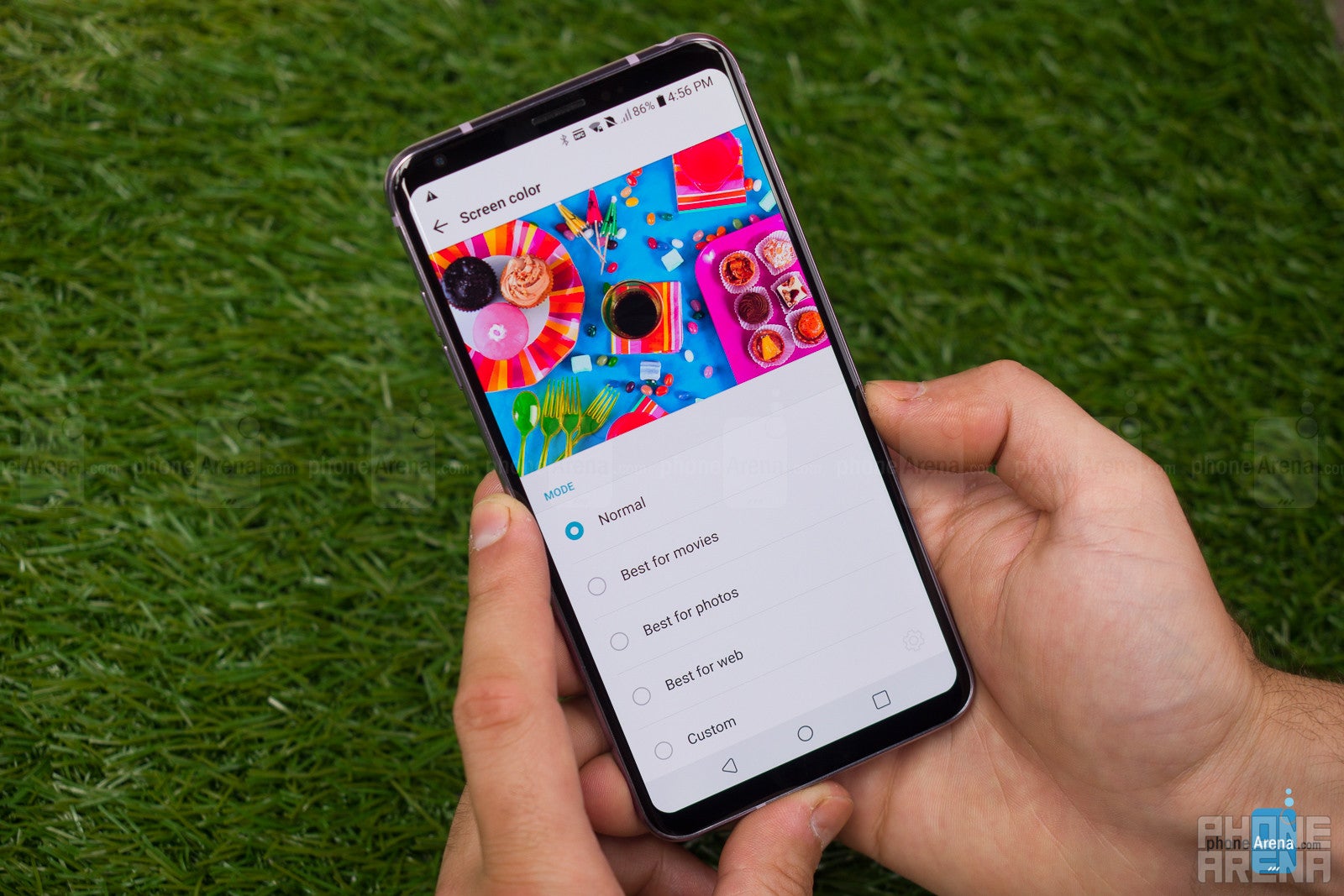
Brightness is decent, and while output comes in a bit below that of the G6, it's not so low as to cause problems – at least with auto-brightness engaged (max output takes a more substantial hit when you're manually controlling brightness).
Like on the G6, curved corners are back, and those on the V30 look just like they did on that model. That is to say: they're not perfectly round, and feel a bit more like smoothed-off 45-degree angles. But since our introduction earlier this year, we're now far more at ease with the very idea of losing screen corners in the first place, and the implementation here doesn't leave us with any objections.
LG also arms the V30 to take advantage of the coming onslaught of HDR-enhanced video content, ready to reproduce such footage with all the extra detail it promises. While availability of such videos is still limited, it's getting better all the time. And for those of you who have been tracking the various formats, the V30 supports HDR10 video.
This all sounds just fine, but fans of the V10 and V20 have no doubt already noticed what we're forgetting: a secondary screen. Those phones both offered secondary mini-screens that sat perched above the main display, ready to offer app shortcuts, easy access to phone features, and much more. In fact, before the V20 arrived with its dual cameras, this was THE defining feature of a V-series phone.
While the V30 is missing the extra screen, all the functionality remains in the form of a new “Floating Bar.” When enabled, the bar lives tucked away on the edge of the V30's screen – you can drag it around anywhere you like – and then tapping it causes the bar to fully expand, giving you access to its shortcuts. Some users may feel that this is a bit of a cop-out, but look at it this way: the new 18:9 screen on the V30 is just so big that there's literally no room for an extra screen, so it was either a matter of wasting space and making the phone bigger, dropping that functionality altogether, or taking this, the software route. We might have been able to live without it at all, but the Floating Bar is a nice extra to have, and all things considered, this is one compromise we're happy to make.
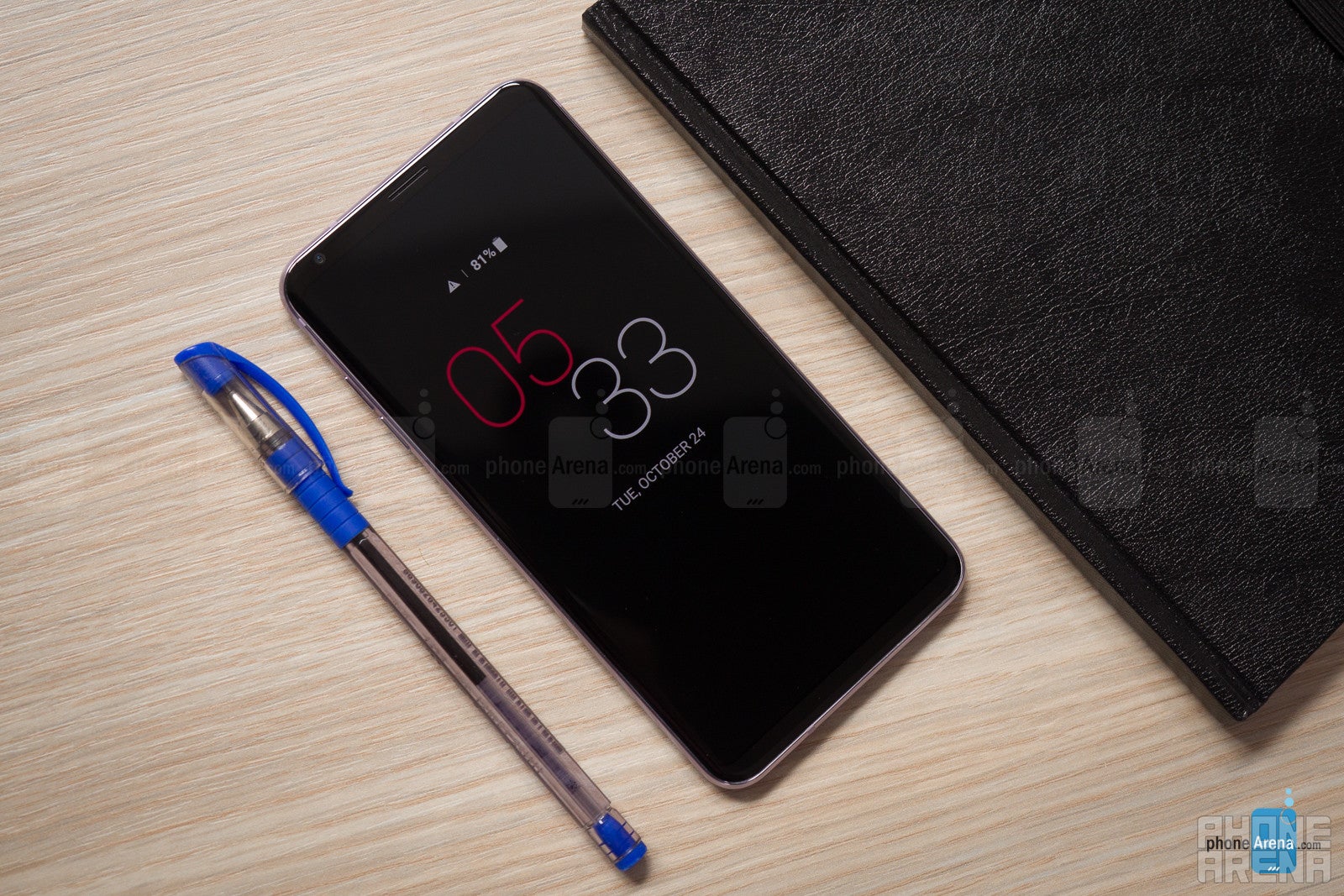
The always-on display
Undermining perhaps all of the other qualities of the V30's display is an apparent issue with screen brightness uniformity. On our review unit (and we've heard similar complaints from other users), viewing a pure white screen doesn't result in consistently bright output across the entire panel. Instead, there are splotchy areas of dimness here and there.
When you're viewing very “busy” imagery, you're probably not going to notice this at all. But when looking at big, uninterrupted block of color – like the background of an app's menu – the effect can be annoyingly prominent. It's not necessarily a full-on deal-breaker, but for a phone this seemingly premium, it's an unsightly and embarrassing blemish.
Interface and Functionality
Some new software tricks aim to make up for the loss of unique hardware
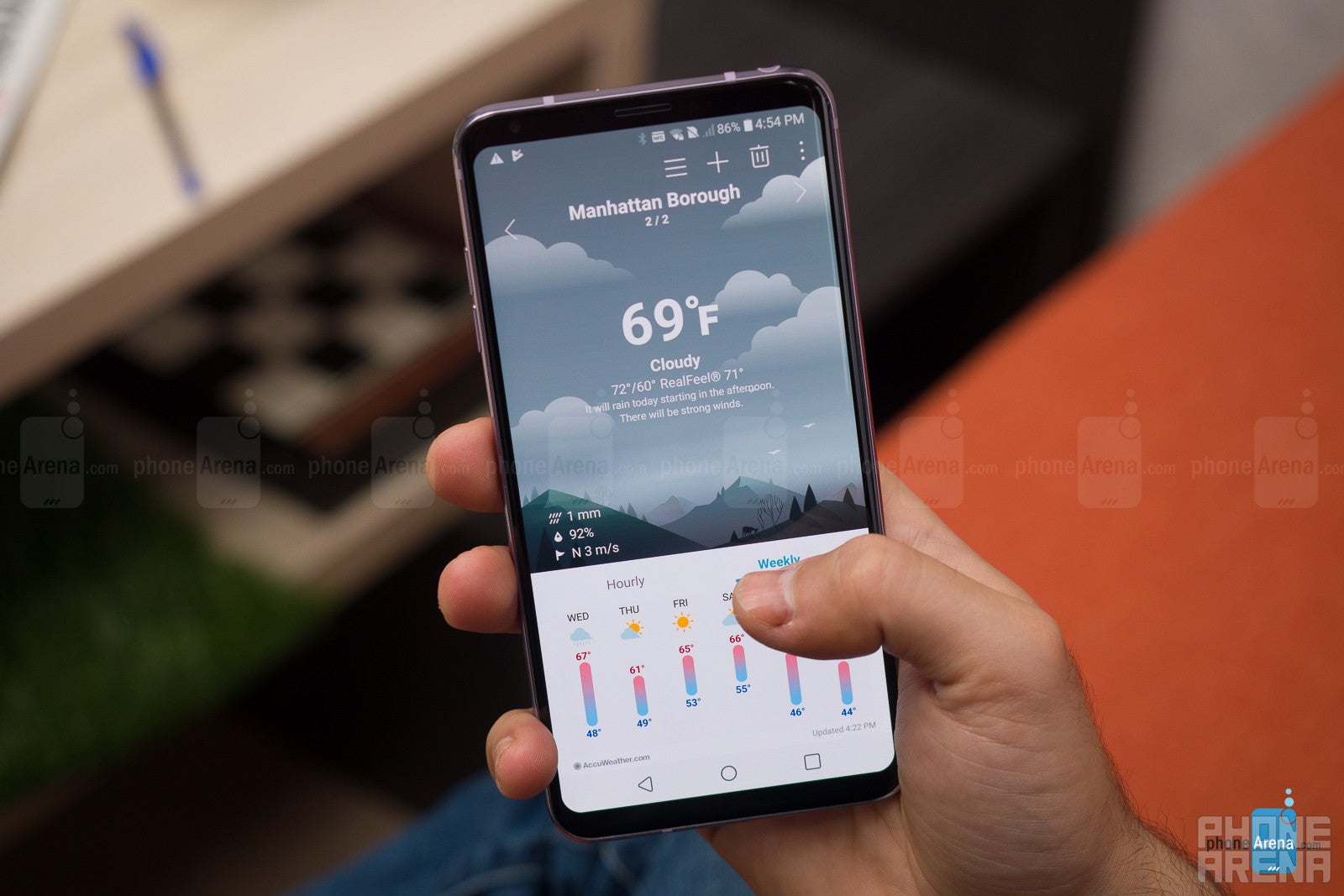
The core of the V30's interface hasn't drastically changed from what we've seen on the G6, or other recent LG handsets.
As far as V30-specific software goes, the big one there is the Floating Bar we already mentioned. Users can configure the bar to scroll between up to four “pages”: app/system shortcuts, screen-capture options (including cropping, adding notation, and GIF-creation), music-playback controls, and access to your most important contacts. You can set up the app shortcuts and configure contacts with any combination of options you choose, while the screen-capture and music-control pages simply allow you to toggle them on or off.
It's possible to get a lot of use out of the Floating Bar, but customization is key to optimizing its value – and beyond setting up those shortcuts, you also need to find an on-screen location for the bar that's convenient for you to reach, while not threatening to block anything important; such is the eternal struggle of such “floating” pop-ups.
Processor and Memory
Getting a nice upgrade form the G6, LG rises to the level of other 2017 heavyweights
When the G6 launched back at MWC 2017, the latest high-end mobile processors weren't quite ready for prime time: Sony had just announced a phone based around the Snapdragon 835 chip, but it wouldn't be available commercially for some time, and Samsung's 835-based GS8 was still a few weeks off. So rather than delay its own phone, LG introduced the G6 running some slightly aging silicon.
Thankfully, history's not repeating itself with the V30, and the manufacturer has been able to outfit the phone with some no-compromise processing power in the form of its own 835. The 4GB of RAM that's paired with isn't boundary-pushing, but the combination gives the V30 the performance it needs to go head-to-head with any of this year's flagship phones.
It's not quite the fastest-such model we've seen, but benchmarks do have it right up there with the rest of the pack. And subjectively, it really does feel incredibly responsive to use, delivering a notable improvement even when compared to the G6.
LG sets the V30 up with 64GB internal storage, which is nice considering the phone's content-creator focus: plenty of room for all those 4K videos. And even if remaining space starts to dwindle, there's also the option for microSD expansion.
Connectivity

The V30 doesn't offer any real surprises when it comes to connectivity: USB Type-C handles data and charging on the wired front, the analog headphone jack is still present, and wirelessly the V30 is ready to handle all the major US networks – and for the most part is available from the carriers directly. The one exception there is Sprint, which only carries the V30+. That's essentially the same as the regular V30, except with 128GB local storage. Why LG gives that option separate branding, we can't say, but the important thing is that you've got some options.
Camera
A helping-hand approach to learning powerful manual controls could have you feeling like a pro in no time
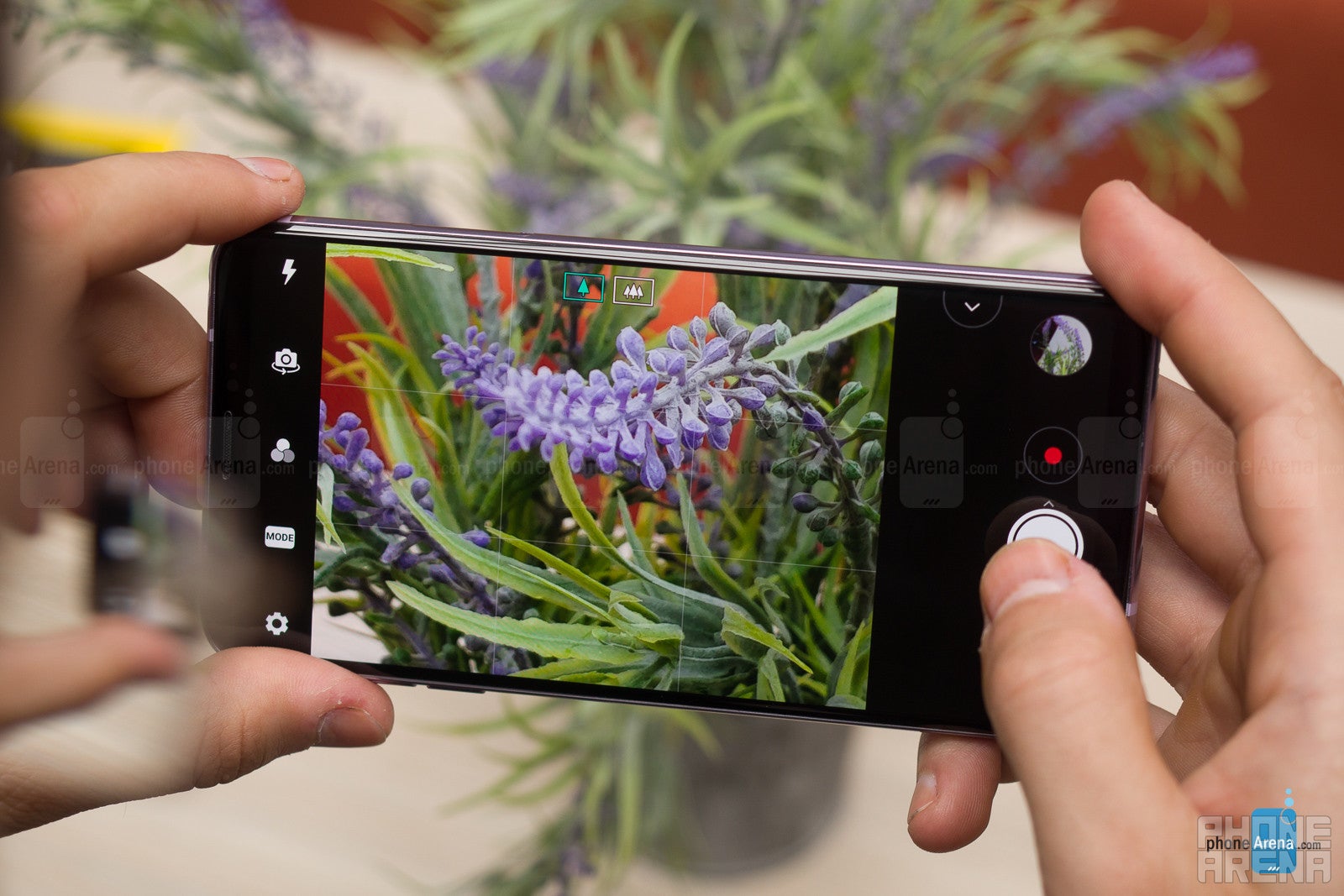
While once little more than a gimmicky extra, dual cameras on smartphones have not just become increasingly common, but also legitimately useful tools for giving users a really flexible imaging experience. LG's a company we've come to respect for implementing dual cameras better than most, and its track record for success continues with the V30.
Compared to last year's V20 camera setup, the V30 makes a few important changes. We've still got one main normal camera and a second wide-angle lens, but with the V20 there was a big disparity between the two: while the main camera was 16MP and had a nice, wide f/1.8 aperture, the wide-angle camera was just 8MP and had a much less low-light-friendly f/2.4 aperture.
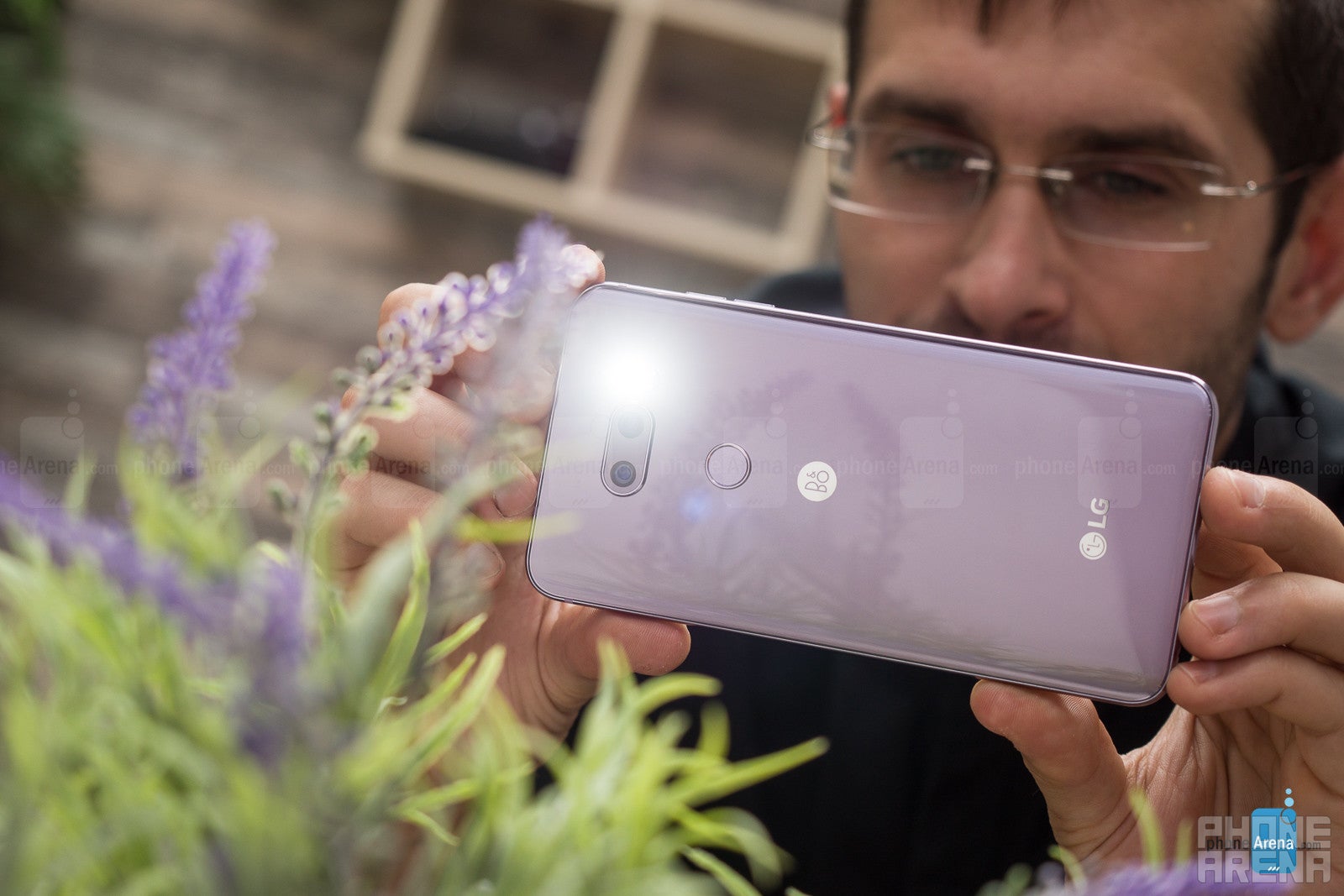
Image quality
One area where LG has tried to enhance the V30's image fidelity concerns the phone's wide-angle camera. While we love the ability to frame our shots how we choose, wide-angle lenses often have a bad habit of distorting subjects towards the edges of a pic: straight lines become slants and curves. With the V30, LG's taken steps it claims are to minimize that effect. We'll agree that it seems to be less pronounced than on the V20, but it's still present to a some extent. LG explained to us that this is achieved with the help of new optics rather than software correction, and we can't help but wonder if the reduction in field-of-view from 135 to 120 degrees might play some not-insignificant role in that.
The photo-taking experience on the V30 should be very familiar for anyone who's used a recent LG flagship, which is to say that it's a quite robust, adaptable setup; full-auto works really well, and there's a powerful set of manual adjustments to give ambitious users more control. What's especially nice this time around is integration with Graphy, which gives novice users a solid starting point for manual operation; you just select an image of the type of shot you're going for, load the associated camera presets, and then receive some helpful nudges towards the settings you'll want to tweak for this particular setting.
Whether you're shooting wide-angle or standard, images tend to look quite impressive, and the main areas we found the cameras to struggle a bit were when handling complicated exposures – though even then, the results tended to be passable. Even the front-facer takes nice pics, but while that also offers a choice of wide-angle or standard framing, the difference is far less pronounced than with the main cameras.
Video recording
Considering the hardware it's packing, the V30 looked like it was in good shape to handle the demands of a little video recording, and for the most part that's turned out to be true. Like with the still pics, there can sometimes be issues with exposure, but we can see the camera working to keep up with changing lighting conditions as you film. It does the same with focus and shifting subjects, though here it struggles a little more, preferring to lock onto larger subjects; you may struggle to get a strong focal lock on something smaller and close up.
The flexibility of the phone's dual cameras extend to video recording, and you're able to jump from one to the other easily without needing to pause and resume filming.
We were also impressed with the audio quality accompanying videos. LG throws an above-average amount of audio tech at the V30's camera setup, letting it, for instance, tap into the phone's receiver to act as a mic for particularly loud sounds – without clipping. While we haven't pushed this to the limit, we did find the mic array to be successful at capturing sounds over a wide range of volumes, including those that were at risk of being overwhelmed by others.
New this year is a software suite LG is calling Cine Video, which consists of two main components: Point Zoom and Cine Effect. Point Zoom allows you to select a subject and then smoothly zoom in on it while recording. The nice bit here is that this doesn't have to be dead-center on your viewfinder; you can Point Zoom anywhere you can see. You have control over speed and direction, and while the controls work well, you can't escape the fact that this is a digital zoom, so quality takes a hit the closer you get.
Cine Effect, meanwhile, lets you choose from a variety of pre-defined video filters to give your footage a specific tone. Some are much more noticeable than others, and you can adjust the intensity of them all. None of this feels like a huge selling point for the V30, but the effects can be fun to play around with, just for a little variety.
Multimedia
Really nice headphone support, but a speaker that needs improvement
For a phone that's so focused on empowering users to produce great multimedia content, it's more than a little frustrating that the consumption of media doesn't appear to have been an equal priority. We've already talked about what to expect from the V30's screen, but our problem here has more to do with sound output.

Just like past V-series phones, the V30's armed with some heavyweight audio hardware: a 32-bit quad DAC. But it's important to remember that this hardware only comes into play when you're using the V30 with headphones. The good news there is that the headphone jack is very much present (far from a certainty in this day and age), and using the V30 with a pair sounds fantastic.
Sadly, we can't say the same for the phone's speaker. The V30 has a single bottom-edge-mounted component, and it's seriously lacking in lower frequency reproduction.
It's also a little frustrating that we don't get a stereo option, especially because LG is already putting the earpiece to double-duty has a high-volume-level mic. Was this an either/or case where it couldn't also be used as a front-facing speaker? We're just bummed because this big screen looks great for watching some videos, but we'll need to bring along headphones to really enjoy them.
Call Quality
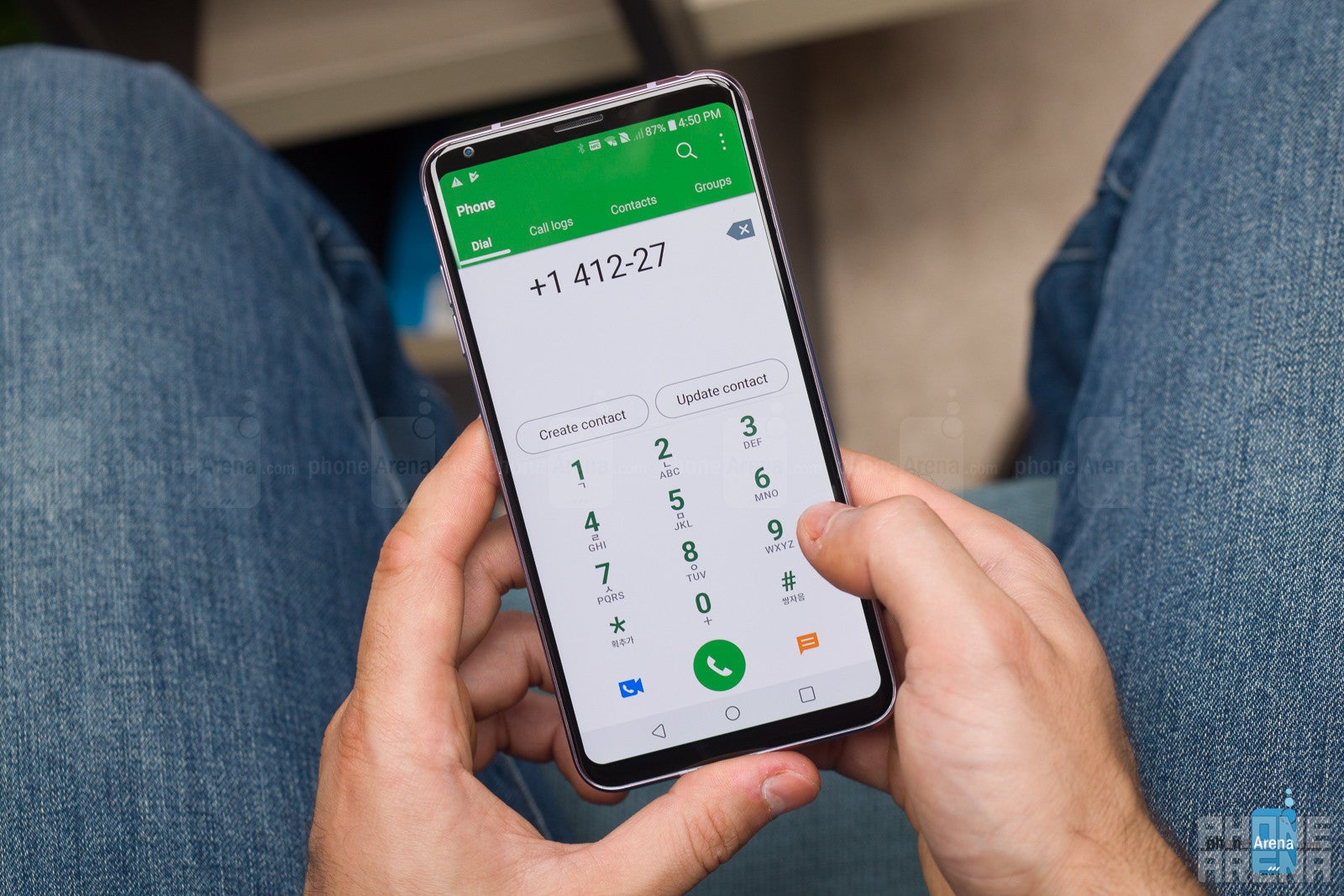
Battery Life
Not the undisputed power-endurance king, but a very solid showing nonetheless
Any time you take away the ability to remove a phone's battery, you're going to face some resistance. But with the V30, there's just so much good going on with the smartphone's power management that we're finding it difficult to get too upset about losing the feature.
Yes, this year the phone's battery is sealed on up inside, permanently tied to the rest of the handset's hardware. But in doing so, LG's managed to increase battery capacity from 3,200 to 3,300 mAh, while also making the V30 thinner than the V20 – that in and of itself is a noteworthy accomplishment.
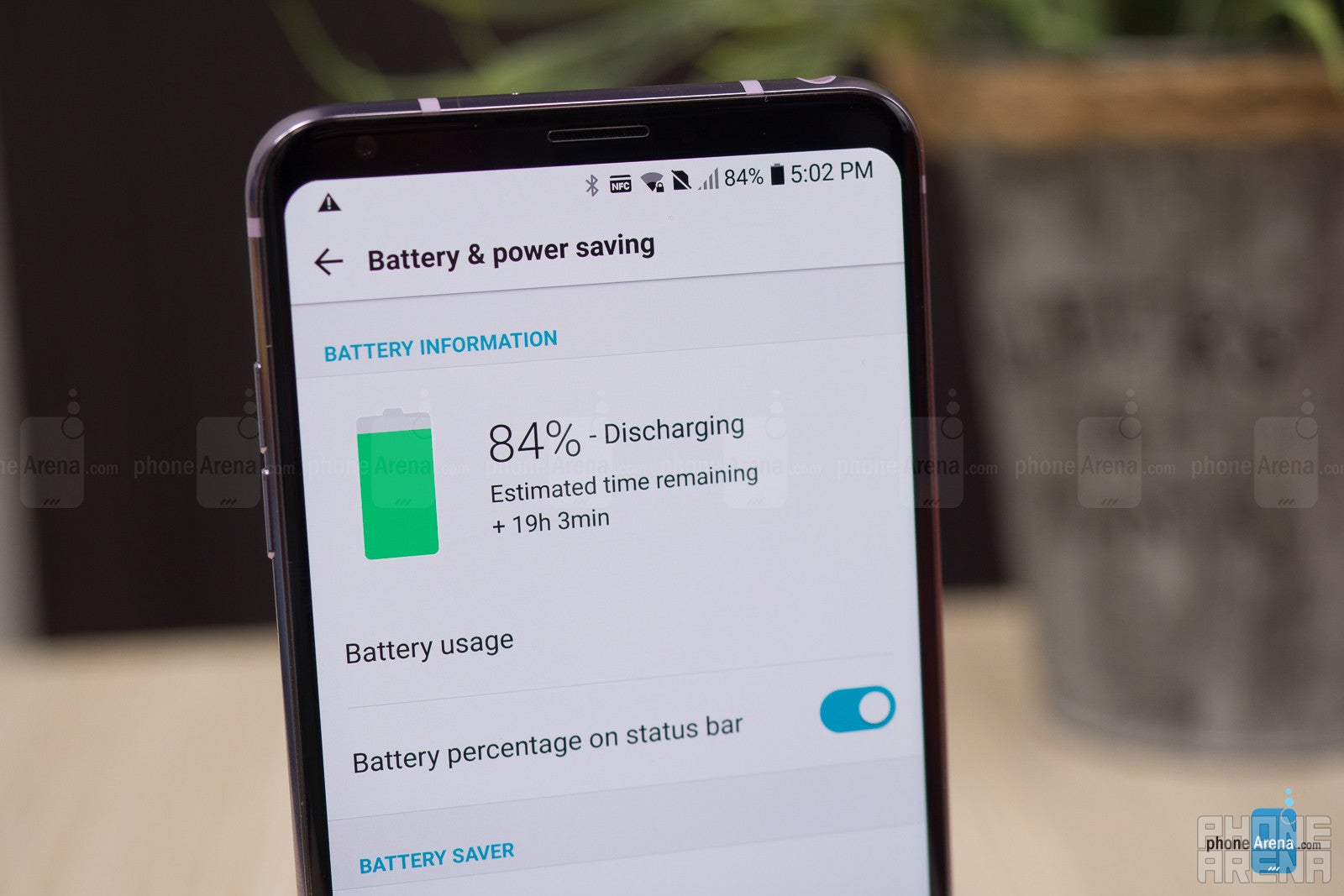
Raw capacity is one thing, but just how long does the V30's battery last? In our custom endurance test, we ran the V30 with its screen on for over nine-and-a-half hours before depleting the phone's power reserves. That's totally decent, beating the Samsung Galaxy S8+, Note 8, and doing much, much better than the G6, although a bit worse than the iPhone 8 Plus.
Recharge times are also really attractive, and filling that 3,300mAh back up takes under two hours with the included quick charger. Another bonus of the phone's new glass back is that you're able to skip wired charging altogether and recharge the V30 wirelessly, just like on the G6, with support built right in.
Conclusion
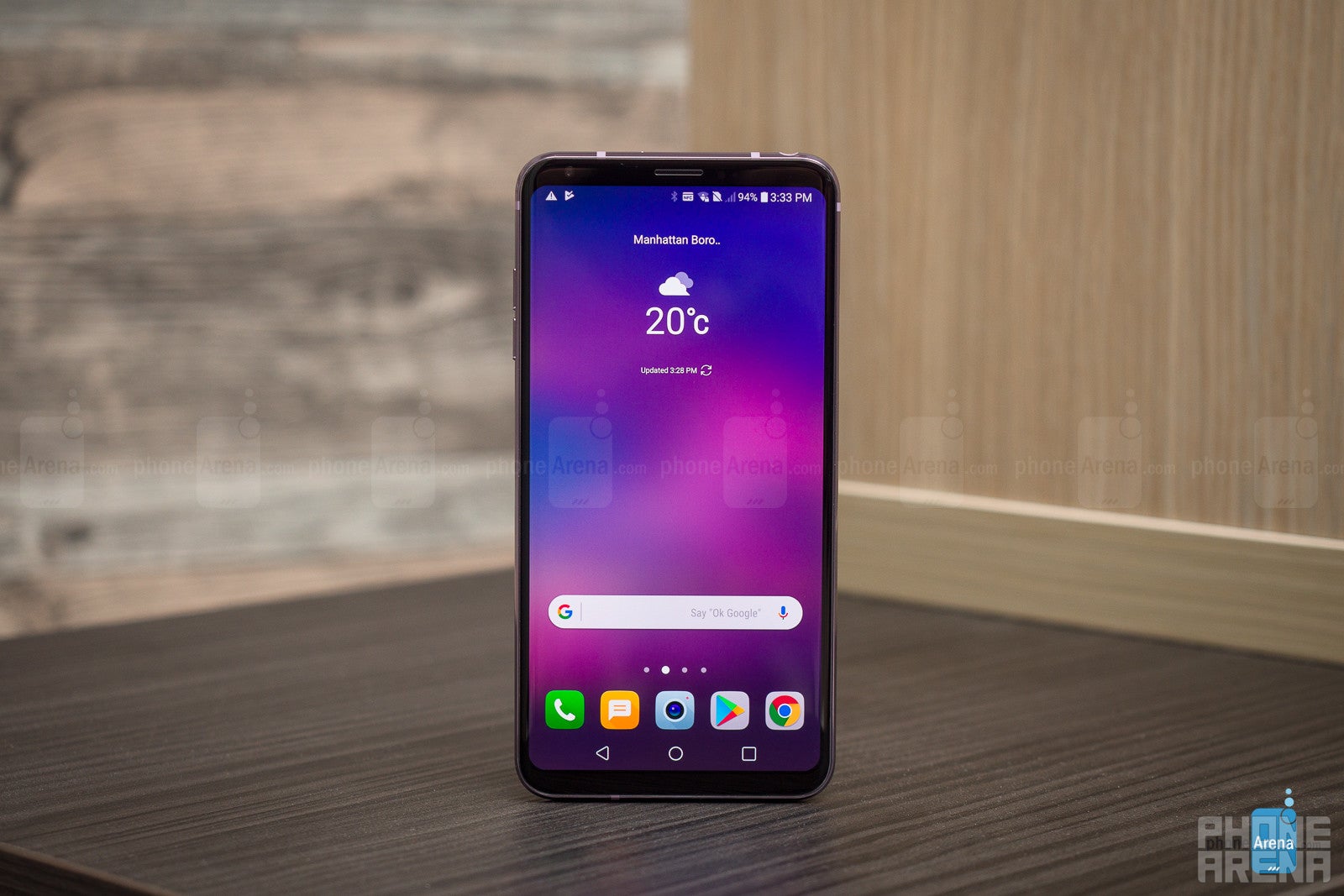
This year, LG's V-phone feels like it occupies a different spot in the company's lineup than it has in the past. It's not quite the phablet version of a mainstream flagship, nor a chance for the manufacturer to experiment with unusual new hardware.
Rounded edges notwithstanding, the V30 feels more like an LG G6.5 than anything else – or maybe the marriage of the G6 and V20 – but really, is any of that so bad? As we said a lot earlier, the V30 seems like it's built on the idea of refinement; there's not a lot here we're seeing from LG for the first time, and instead the V30 comes across as the company building off recent handsets in a conservative, deliberate manner, rather than doing anything gimmicky or overly attention-seeking.
And you know what? For the very large part, that approach pays off. The V30 probably won't evoke quite the same strong reactions from fans as past V-models, but what it lacks in showmanship it more than makes up for with handsome styling, capable performance, and a nice assortment of features that once again really inspire us to become better content creators.
To be fair, it does have its problems: the display uniformity glitches, the disappointing speaker, and even the cameras – which are very good – still aren't quite as effortless as some users might prefer. All of these hurt the V30, but none can quite talk us out of liking the phone.
If you liked the idea of the G6, but weren't quite ready to buy a new phone earlier this year, the V30 is an easy recommendation. Or if you thought the Galaxy S8+ was a little underwhelming (or the Note 8 too expensive), the V30 comes through with a similar package, but the very useful upgrade of dual cameras. It's arguably LG's strongest smartphone effort all year, and while we can't say if that will ultimately spell broad success for the V30, this is one phone that deserves a win.

Update: Read our LG V40 ThinQ review!
Follow us on Google News
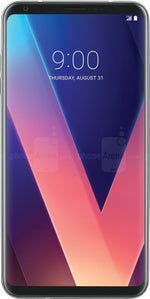
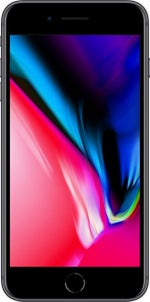
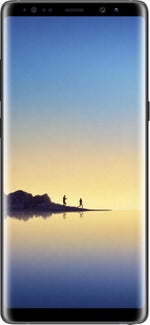
















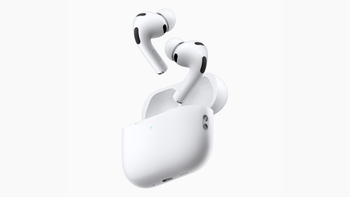
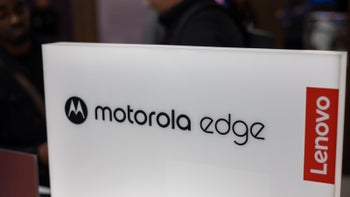

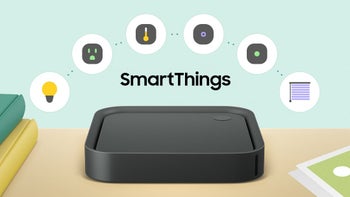
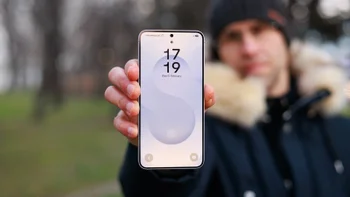
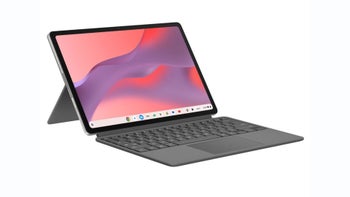
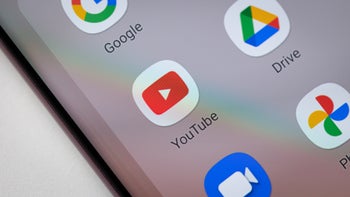
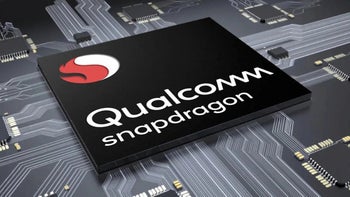

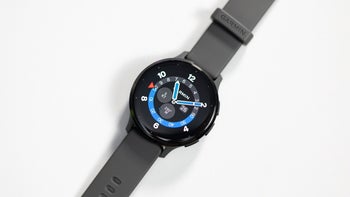
Things that are NOT allowed:
To help keep our community safe and free from spam, we apply temporary limits to newly created accounts: